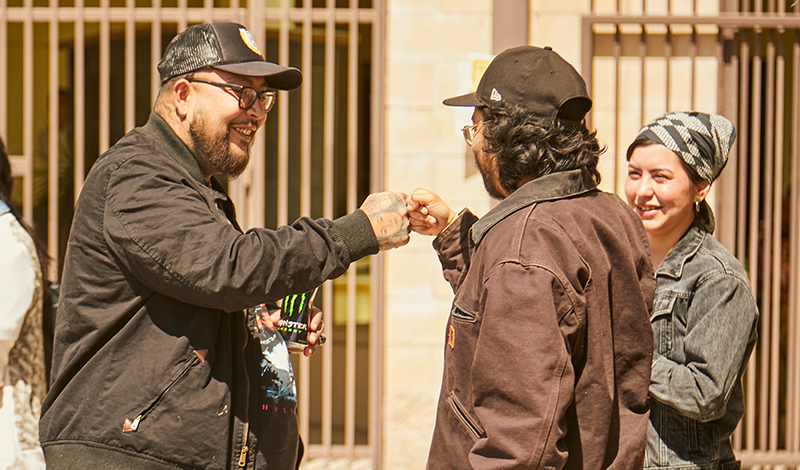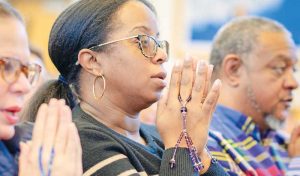The following commentary is from Ikeda Sensei’s lecture “The Spirit of ‘Many in Body, One in Mind’ Is the Path to Victory.” The full lecture can be found in The Hope-filled Teachings of Nichiren Daishonin, pp. 203–11.
Two Wheels of a Cart
The oneness of mentor and disciple and the spirit of many in body, one in mind are essentially inseparable principles; they are like the two wheels of a cart. If we do not share our mentor’s heart or spirit to realize kosen-rufu, there will be no genuine unity of purpose among our diverse membership. Nor can we be called disciples who truly embody our mentor’s spirit if we fail to cherish our harmonious community of practitioners and to make continuous efforts to forge and maintain unity.
Nichiren teaches his followers that if they persevere in faith with the same spirit as his and unite in heart and mind, the goal of kosen-rufu will definitely be realized.
The key to victory in all spheres of our movement lies in building and maintaining an organization whose members are united in spirit. (The Hope-filled Teachings, pp. 203–04)
Expressing Our Unique Individuality
To quickly reconfirm the meaning of the concept of “many in body, one in mind,” many in body—which can also be expressed as “different in body”—refers to people’s diverse personalities and characteristics, and the roles they have to fulfill. One in mind—which can also be expressed as “same in heart or spirit”—generally means sharing the same purpose or values. It also means cherishing a shared wish or aspiration to realize a lofty goal or ideal.
In terms of Buddhism, the core of “being one in mind” is faith based on the oneness of mentor and disciple—that is, each person taking kosen-rufu, the Buddha’s will and intent, as a personal mission and actively working for its realization. For disciples to take on challenges and strive to win with the same spirit as their teacher is the essence of the spirit of many in body, one in mind.
The explicit acknowledgment here that though we unite in spirit, we are many or different in body is very important. I find it profoundly significant that Nichiren doesn’t use the term one in body, one in mind—which is commonly used in Japanese to signify unity in conformity—rather he uses many in body, one in mind, signaling unity in diversity. In other words, though we may share the same purpose or aspiration, we do not suppress or deny our own individuality. When we each fully express our unique potential through the power of the Mystic Law, we can manifest the invincible strength of the unity of many in body, one in mind. …
Here, we should also remember that, through manifesting the wisdom of our Buddha nature, we can break free from the fundamental darkness or ignorance that would keep us trapped in the paths of evil and suffering. The spirit of many in body, one in mind is not a unity achieved through external constraints or demands for conformity. Rather, it is an expression of the wisdom of our Buddha nature arising from a fundamental liberation occurring in the depths of each person’s life. It is a unity based on aligning our own hearts with the heart of the Buddha. “Many in body” or “different in body” are expressions supported by the guiding principle of Buddhism that all people have boundless potential and can lead the most wonderful lives. (HFT, 205–07)
Leading With a Stand-Alone Spirit
In terms of our efforts, everything begins with leaders rising into action with a stand-alone spirit to empower the people. Sharing that ideal, our members join together for its realization, and with unshakable unity of purpose, they rise up to confront and defeat evil. This could be called the formula for the victory of the people in the realm of kosen-rufu.
A leader taking action based on a stand-alone spirit is fundamentally different from a leader behaving as a dictator. At times, based on their towering sense of responsibility, courageous leaders may need to take a stand in making bold decisions for their organization. Unlike dictators, however, genuine leaders will listen to the sincere opinions of many others. It is especially important in this day and age for key leaders at all levels of the organization to freely discuss things with other core leaders. When our leaders engage in frank and open dialogue with other leaders who share the same sense of responsibility and when they work to expand and strengthen solidarity through the power of dialogue, the Soka Gakkai will achieve even greater growth.
Accordingly, leaders should constantly give thought to what they need to do and what they need to discuss so that everyone is satisfied and inspired to stand up with joy and conviction and can continue making wonderful strides toward kosen-rufu. This is the responsibility of leaders of a united organization—an organization where the spirit of many in body but one in mind prevails. …
Let us forever engrave in our lives the motto: Win through perfect unity (see WND-1, 618). With this resolve, let’s continue to build a united organization through our faith and our concerted efforts, and create a rhythm of unceasing victory. (HFT, 210–11)
You are reading {{ meterCount }} of {{ meterMax }} free premium articles





